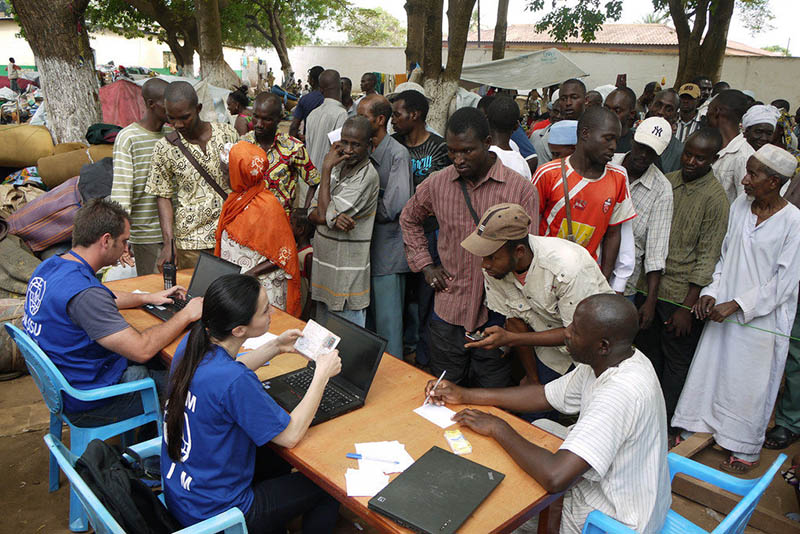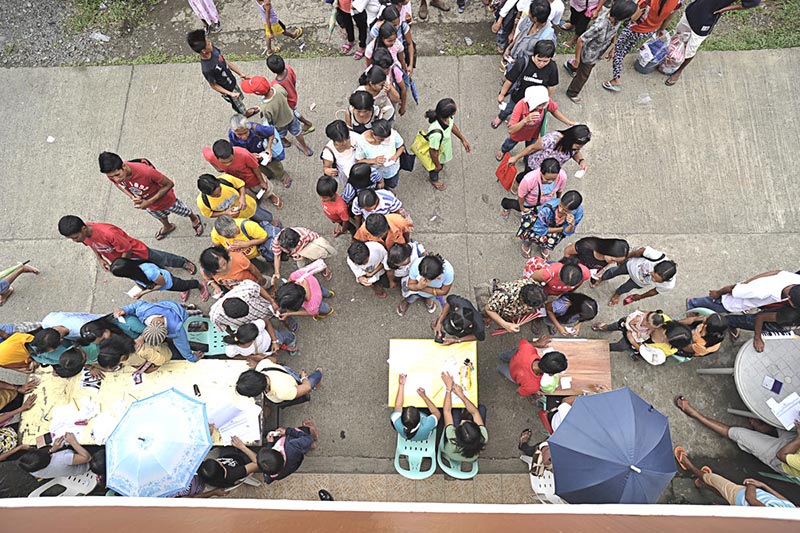Editor’s Note: This is the second post in our Law in Computation series.
According to the World Bank, over 1 billion people live without a formally recognized identity. With funding from the Rockefeller Foundation, Accenture and Microsoft, and motivated by UN Sustainable Development Goal 16.9, to “provide legal identity for all” by 2030, the ID2020 Alliance is a UN sponsored public-private partnership with plans to make “digital identities” more accessible for refugees, stateless and displaced populations through biometrics and blockchain technology. As an executive at Accenture explains: “Digital ID is a basic human right.”
Prior to tracking ID2020 and joining the new Technology, Law and Society Institute at UC Irvine with Bill Maurer and our team, I admittedly hadn’t thought much about the role of technology in relation to my research interests. I study law and society, how and why global social problems are constructed, and the theories of social change these constructions generate across social and legal institutions. I mostly look at issues and discourse related to human trafficking, human rights, and migration. Much of this interest stems from my previous experiences working for NGOs in Brazil and Cambodia. Now, I spend most of my time analyzing UN archives, talking to advocacy organizations, examining the effect of global legal discourse “on the ground,” and for one project, I interview asylum seekers detained in US detention centers. So, when the request for proposals from students interested in participating in the Institute hit my inbox last year, I initially didn’t think it applied to me. I certainly study law and society… but technology? Nonetheless, the prospect of the institute intrigued me, so I applied anyway. Being part of the new institute has required quite the learning curve (I admittedly keep Google handy during our meetings, so I can covertly look up terms like Twitter-bot and machine bias). However, it’s also incredibly rewarding, and strengthens how I think about my existing and future research.

UN Migration Agency checks IDs in Bangui © IOM/Sandra Black 2014
Tracking the rationale of ID2020 and projects like it (e.g., algorithmic approaches to refugee resettlement) illuminates how institutions perceive, socially construct, and locate the issues at stake for displaced populations. I worked on trafficking-related issues in Cambodia, so I understand that tangible forms of legal identity (e.g., birth certificates, passport) can be vital to societal participation and accessing basic rights. There are thousands of ethnic minorities who were born within Cambodia’s borders, for example, who face ongoing discrimination, violence and exploitation because they were denied or lack access to basic documentation. So, I appreciate that developing a digital identity system for displaced populations can provide administrative benefits for distributing aid, and for population planning, public health, and economic development. In many places, refugee and disaster relief depends on pen and paper registration systems, making administration tedious.
I ask: is fulfilling the “right” to a legal identity really one and the same with the creation of a digital identity database?
Proponents of ID2020 often emphasize the advantages of digital identities for government institutions. I often read, for example, that one of the biggest challenges for developing a global digital identity system is data security—enter blockchain. Once secured, however, digital identities will ensure migrants and refugees “are who they say they are,” guaranteeing that aid is directed to those who “need it most.” By situating digital identities as a way to mitigate false identities and deny those who “cheat” the aid system, this side steps the individual “right to identity” that so many are denied, and instead supports the notion that migrants are threats to security who must be sorted and authenticated. Suggesting that this guaranteed aid goes to the most “needy” also delegitimizes those who don’t fit contemporary constructions of neediness (i.e., deservingness) and reproduces the “good v. bad” migrant narratives that have long permeated discriminatory migration policy.

UN Migration Agency distributing relief kits in Aklan © IOM/Alan Motus 2014
Finally, I wonder if creating a digital identity system really addresses core issues of inequality and discrimination that contribute to lack of legal identity in the first place. Proponents of ID2020 suggest digital identities will circumvent situations in which migrants’ documents are lost, destroyed or stolen, and they have no way to prove who they are. Losing documents can certainly have negative consequences (though in some cases, asylum seekers actually want to lose their documents), but this only applies to individuals who in fact have a legal identity to begin with. As much as this benefit is touted by digital identity enthusiasts, it does not apply to the 10 million stateless individuals who have no legal identity at all. Does recording these individuals’ biometric data into an identity database “give” them a new identity? Or does it only document their lack of one? UNHCR and other UN agencies have long recognized particular ethnic minorities in Vietnam and Cambodia as “stateless,” for example, but such a determination does not require that any nation-state grant them benefits of residency or citizenship. So, the claim that digital identities will ensure refugees, stateless people, and other migrants receive the services they are entitled to, when and where they need them, negates the fact that those benefits must be accessible to them in the first place.
Don’t get me wrong. There may well be benefits to streamlining the administration of aid and development through technological solutions. The overburdened system as it stands faces significant challenges in meeting the rights and needs of displaced populations. But whether “digital identities” as currently imagined will in fact “provide legal identity for all,” (emphasis mine) is yet to be determined.

2 Comments
As the global technical expert for UNICEF on Legal Identity and SDG 16.9, I feel compelled to correct the gross errors in this blog. There is no human rights instrument that includes the right to a “digital identity” moreover a digital identity is nothing more than a platform for digitizing an identity system. Legal identity, defined in human rights law as the “right to be recognized as a person before the law” though birth registration and certification is university ratified in the Convention on the Rights of the Child and referenced in every major human right’s convention since 1948. SDG 16.9 is not in any way about digital identity despite the ID2020 and ID4D references to this. SDG 16.9 is on legal identity from birth. Further, ID2020 is not supported by any United Nations entity beyond mere participation in event to help mitigate the consequences of the notion that “digital identity” is the solution to the legal identity gap.
Hi Kristen. Thank you for your comment and perspective. I have much respect for UNICEF’s work, and worked closely with many UNICEF programs when working as a practitioner in Asia. My point in this post is not that there is actually (or even should be) a right to digital identity. Rather, I am critiquing ID2020’s suggestion that “creating” a digital identity through blockchain resolves issues related to statelessness, trafficking and/or access to basic human rights. If anything, I think creating widely accessible digital identities for refugees and migrants that label them as such has the potential to make them more vulnerable to various forms of discrimination. I am a proponent of SDG 16.9 and legal registration that is recognized by the state (since this is what currently seems to matter most in our global economy); but I don’t think digital identities is the answer to this. I am confused about the comment that “the UN” is not a supporter of ID2020 though, because UN agencies have been heavily involved in promoting the campaign, have helped with training, have publicly supported the program and have contributed to more than just an event or two.
1 Trackback